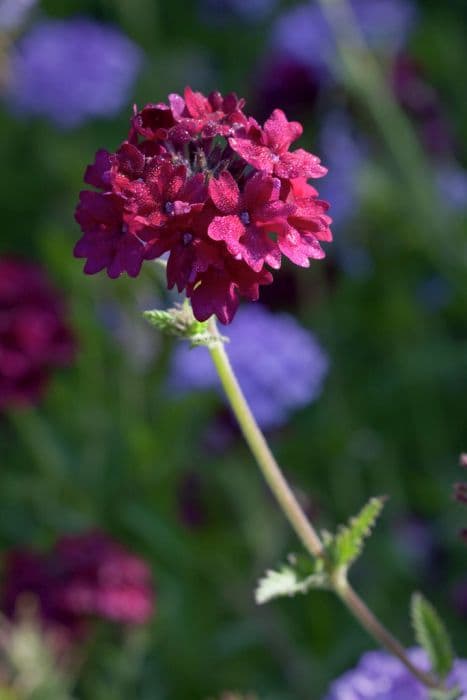Verbena rigida f. lilacina 'Polaris'

ABOUT
Verbena rigida f. lilacina 'Polaris', commonly known as slender vervain, 'Polaris', is a striking plant known for its vibrant and showy flowers. This variety exudes a lilac hue through its small, tubular blossoms, which are gathered in tight clusters at the tips of stiff, upright stems. These blooms present a delicate and frothy appearance as they contribute a splash of color to garden spaces. The foliage beneath these radiant flowers is typically dark green, with leaves that have a rough, slightly hairy texture. These leaves are narrow and elongated, with toothed edges that add to the textured visual appeal of the plant. The slender vervain 'Polaris' maintains a bushy and well-branched habit, creating a dense mat of greenery from which the floral displays majestically arise. The overall impression of the Verbena rigida f. lilacina 'Polaris' is one of hardy vibrancy and a lush, colorful presence that enlivens any sun-soaked landscape in which it is planted.
About this plant
 Names
NamesFamily
Verbenaceae.
Synonyms
Slender Vervain, Tubular Vervain, Rigid Verbena, Polar Vervain.
Common names
Verbena rigida f. lilacina 'Polaris'.
 Toxicity
ToxicityTo humans
The common name for Verbena rigida f. lilacina 'Polaris' is Slender Vervain. There is limited information on the toxicity of Slender Vervain to humans. It is not typically known to be a highly toxic plant. However, it is always advisable to exercise caution and avoid ingesting any parts of ornamental plants as they may cause gastrointestinal discomfort or other adverse reactions in some individuals. Ingesting parts of the plant may lead to symptoms such as nausea, vomiting, or diarrhea. If any part of the plant is consumed and symptoms appear, seek medical attention.
To pets
Slender Vervain is the common name for Verbena rigida f. lilacina 'Polaris'. This plant is not commonly listed as toxic to pets such as dogs and cats. While not highly toxic, if a pet ingests a significant quantity of the plant, it may experience mild gastrointestinal upset, such as vomiting or diarrhea, due to the unusual plant matter in its diet. If your pet shows symptoms of distress after ingesting any part of this plant, consult a veterinarian.
 Characteristics
CharacteristicsLife cycle
Perennials
Foliage type
Deciduous
Color of leaves
Green
Flower color
Lilac
Height
1-2 feet (30-61 cm)
Spread
1-2 feet (30-61 cm)
Plant type
Herb
Hardiness zones
7
Native area
South America
Benefits
 General Benefits
General Benefits- Attracts Pollinators: The flowers of Verbena 'Polaris' are known to attract butterflies and bees, promoting biodiversity in the garden.
- Drought Tolerant: Once established, this plant is drought-resistant, making it suitable for xeriscaping or gardens in arid climates.
- Easy to Grow: It is relatively low-maintenance, suitable for novice gardeners.
- Long Blooming Period: Offers a long flowering season, typically from early summer to frost, providing extended visual interest.
- Ground Cover: With its spreading habit, it can efficiently cover bare spots in the garden.
- Landscape Versatility: Can be used in borders, rock gardens, or as a spilling plant in containers.
- Colorful Display: Produces vivid lilac flowers that add a pop of color to the garden scheme.
- Deer Resistant: It is not a preferred plant for deer, making it a good choice for gardens in deer-populated areas.
 Medical Properties
Medical PropertiesThis plant is not used for medical purposes.
 Air-purifying Qualities
Air-purifying QualitiesThis plant is not specifically known for air purifying qualities.
 Other Uses
Other Uses- As a natural fabric dye: Verbena can be used to create a soft, greenish dye for fabrics, offering a sustainable alternative to synthetic dyes.
- In companion planting: It can attract beneficial insects that prey on pests, making it a useful companion plant in gardens.
- Culinary garnish: The flowers of Verbena can be used to add a splash of color and a light lemony flavor to salads and desserts.
- Photography prop: Because of its bright, lilac flowers, Verbena makes an excellent subject or backdrop for plant photography.
- Floral art: The rigid stems and vibrant blooms of Verbena are ideal for creating intricate floral arrangements and bouquets.
- Educational tool: Verbena can be used in educational settings to demonstrate plant growth, pollination, and the lifecycle of a perennial.
- Insect repellent: Some gardeners plant Verbena around patios and seating areas as its scent is thought to help deter certain insects.
- Pressing and framing: Verbena flowers can be pressed and framed as part of a botanical art collection or craft project.
- Erosion control: Verbena's roots help stabilize soil, making it suitable for planting in areas susceptible to erosion.
- Homemade potpourri: The flowers can be dried and included in potpourri mixes for a natural, gently fragranced home accessory.
Interesting Facts
 Feng Shui
Feng ShuiThe plant Verbena is not used in Feng Shui practice.
 Zodiac Sign Compitability
Zodiac Sign CompitabilityThe plant Verbena is not used in astrology practice.
 Plant Symbolism
Plant Symbolism- Healing and Medicine: Verbena has historically been associated with healing properties, often used in traditional herbal remedies to treat various ailments.
- Protection: It has been carried or used in rituals as a protective charm against harm and evil spirits.
- Purity: The color and delicate form of the 'Polaris' variety can symbolize purity and innocence.
- Enchantment: Verbena is often linked to enchantment, symbolizing a sense of wonder or the magical transformation of the ordinary into the extraordinary.
- Harmony and Peace: The soothing appearance of the Verbena 'Polaris' can represent a desire for tranquility and harmony in one's environment or relationships.
 Water
WaterThe Slender Vervain ('Polaris') should be watered deeply enough to saturate the root zone, then allowed to dry out somewhat before watering again, which encourages deep root development. This might mean watering once a week during hot, dry spells, with about one gallon per plant as a rough guide. During cooler or rainy periods, watering frequency should be reduced. It's important to check the soil moisture levels regularly – the top inch of soil should be dry to the touch before the plant is watered again. Overwatering or allowing the plant to sit in waterlogged soil can lead to root rot.
 Light
LightSlender Vervain ('Polaris') thrives in full sun conditions. It requires a location where it can receive at least six to eight hours of direct sunlight daily. The plant will perform best and produce the most flowers when planted in an area that maximizes its exposure to sunlight without any significant shade. If full sun isn't possible, the next best option is light shade where the plant will still receive some direct sun.
 Temperature
TemperatureSlender Vervain ('Polaris') prefers warm temperatures and is generally hardy in USDA zones 7 to 10. It can tolerate a minimum temperature down to about 0°F (-17.7°C) and a maximum temperature that typically does not exceed 90°F (32.2°C). The ideal temperature range for this plant is between 60°F (15.5°C) and 80°F (26.6°C), which encourages vigorous growth and flowering.
 Pruning
PruningPrune the Slender Vervain ('Polaris') to remove dead flowers and encourage continuous blooming throughout the season. Light pruning can be done periodically to maintain shape and remove damaged or spent stems, promoting better air circulation. The best time to perform more extensive pruning is in late winter or early spring, before new growth begins.
 Cleaning
CleaningAs needed
 Soil
SoilThe Sandy Loam Tall Verbena prefers well-draining soil rich in organic matter with a pH between 6.0 and 7.5. Mix two parts loam with one-part sand and peat moss for optimal growth.
 Repotting
RepottingSandy Loam Tall Verbena does not usually require frequent repotting; repot every 2-3 years or as needed when the plant outgrows its container.
 Humidity & Misting
Humidity & MistingSandy Loam Tall Verbena can tolerate a range of humidity levels but prefers moderate conditions; no specific humidity requirements.
 Suitable locations
Suitable locationsIndoor
Place in bright light, limit water, and ensure good air circulation.
Outdoor
Full sun, protect from frost, water moderately, and well-drained soil.
Hardiness zone
7-11 USDA
 Life cycle
Life cycleThe life of Verbena rigida f. lilacina 'Polaris', commonly known as Slender Vervain, begins with seed germination, occurring in the warmth of late spring or early summer, after the last frost when soil temperatures reach a conducive level. The next stage involves the development of a vegetative state, where the plant establishes its root system and foliage growth through photosynthesis. Slender Vervain will then enter the flowering phase, typically in the first year, producing tall, upright stems with clumps of lilac-purple flowers that attract pollinators and bloom continuously from early summer into fall. Following pollination, the plant sets seeds that can either drop nearby to self-seed or be dispersed by wind or animals to establish new plants. As a perennial in warmer climates, it may enter a dormancy phase during the colder winter months, conserving energy at or just below the soil level. In colder climates, Verbena rigida f. lilacina 'Polaris' is treated as an annual, completing its life cycle within one growing season before dying with frost, where upon gardeners may collect seeds or rely on self-seeding for the next season's growth.
 Propogation
PropogationPropogation time
Spring to early summer
Verbena rigida f. lilacina 'Polaris', commonly known as Slender Vervain, is typically propagated through seed sowing. The ideal time for sowing seeds is in late winter to early spring, in a period that provides enough time for the seeds to germinate and the young plants to be strong enough for planting out after the risk of frost has passed. To propagate by seed, one should scatter the seeds lightly onto the surface of a well-drained seed starting mix and press them in gently. Providing consistent moisture and warmth, an ideal germination temperature is about 70°F (21°C), will encourage sprouting. Keep the seed trays or pots in bright, indirect light until the seedlings are large enough to handle, after which they can be transplanted into individual pots and eventually into the garden.
![Vervain [Donalena Lavender Grace]](/_next/image?url=https%3A%2F%2Fplants-admin.emdemapps.com%2Fimages%2Fplants%2F%2Fimages%2F604b575c837e7.png&w=640&q=75)
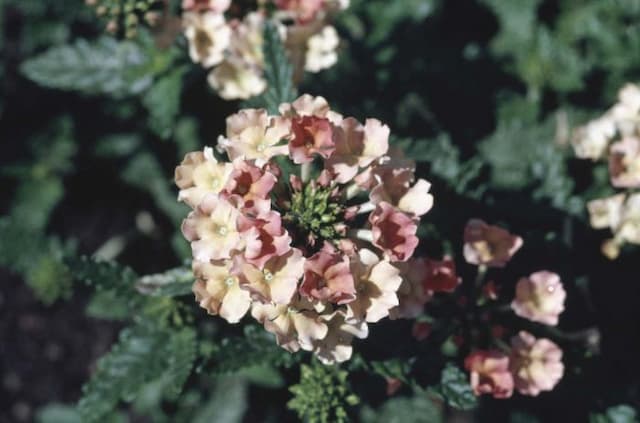

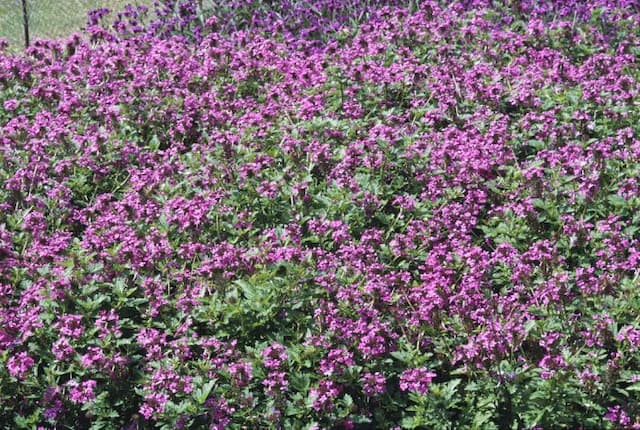
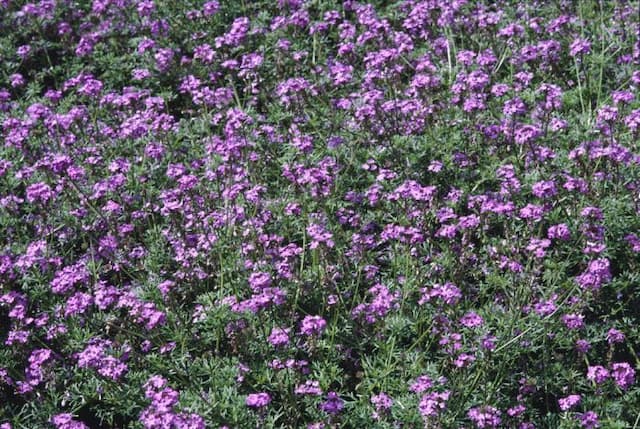
![Vervain [Endurascape Pink Bicolor]](/_next/image?url=https%3A%2F%2Fplants-admin.emdemapps.com%2Fimages%2Fplants%2F%2Fimages%2F604b594e749b0.png&w=640&q=75)
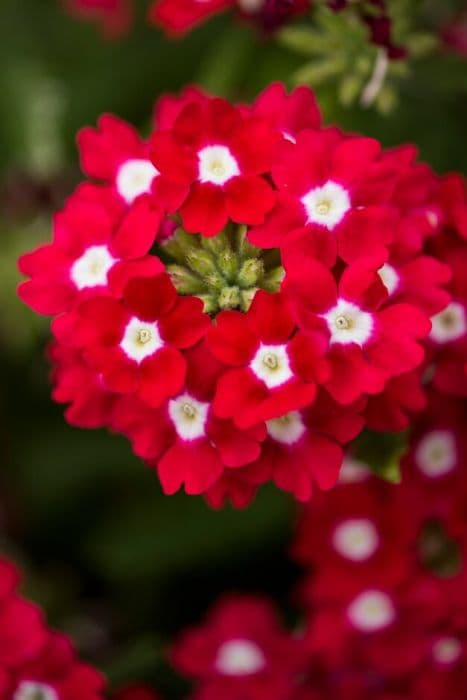
![Vervain [Seabrook's Lavender]](/_next/image?url=https%3A%2F%2Fplants-admin.emdemapps.com%2Fimages%2Fplants%2F%2Fimages%2F604b650ea9729.png&w=640&q=75)

